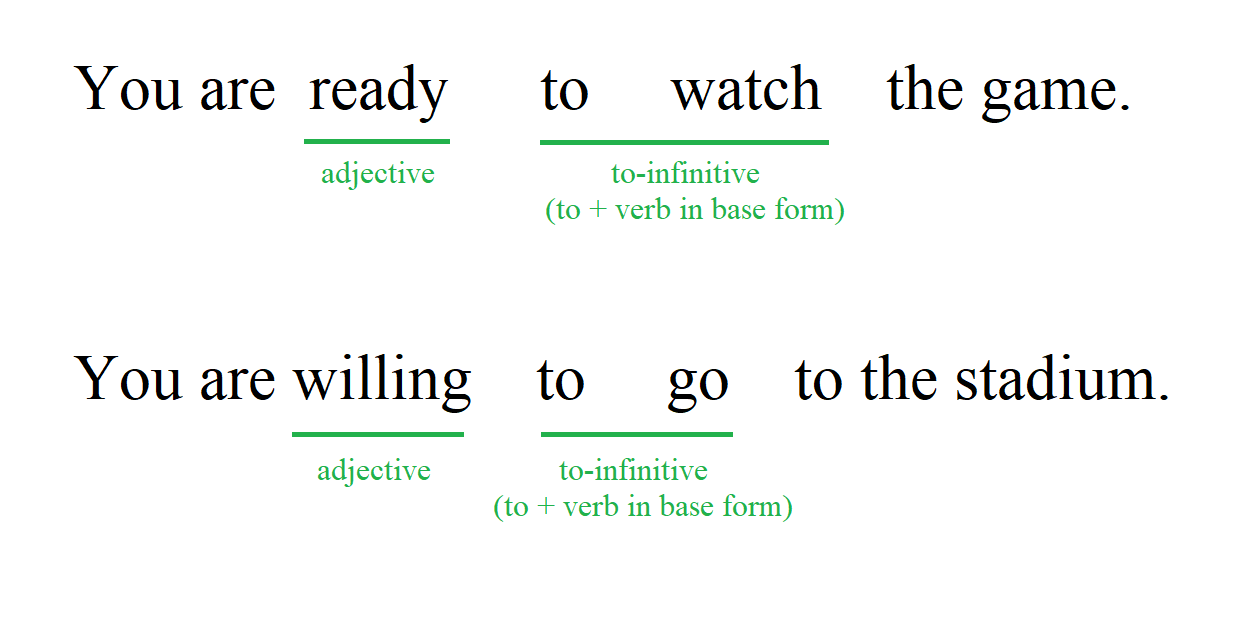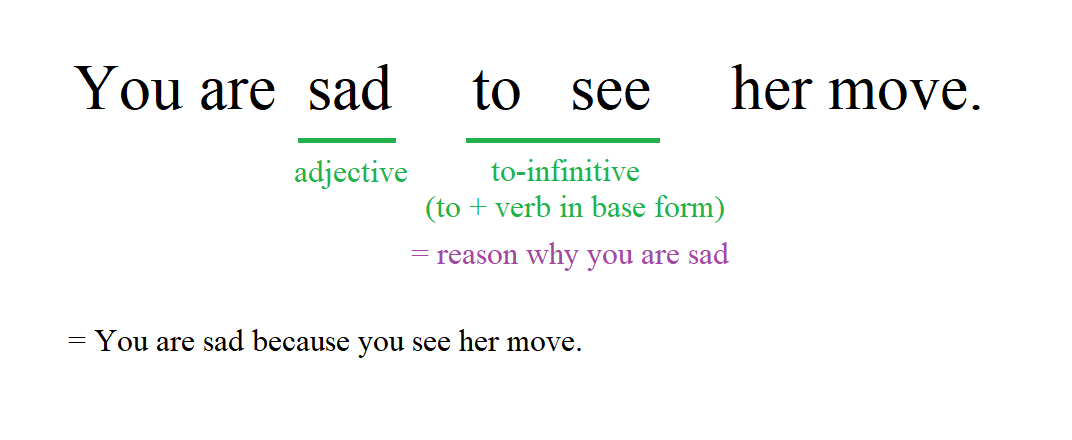Adjective + To-infinitive
- The adjective + to-infinitive pattern is used to describe targets or reasons for feelings.
- To-infinitive means "to" + the base form of a verb.
- Common patterns are: "ready to", "happy to", "easy to", "sad to".
In English, we often use adjectives followed by a "to-infinitive" to describe targets of actions or reasons for feelings. Understanding these patterns helps us express our thoughts more clearly.
Common Adjective + To-Infinitive Patterns
To-infinitive is "to" + verb in base form. You can put a to-infinitive after an adjective to describe the target of the adjective.
For example, "I'm ready to swim" - "to swim" (to-infinitive) is what you are ready for.

Here are some common adjective + to-infinitive patterns:
- Ready to - used when someone is prepared for something.
- Able to - used when someone can do something.
- Easy to - used when something is not difficult to do.
Examples:
-
I am ready to go.
Subject ("I") + adjective ("ready") + to-infinitive ("to go").
-
This book is easy to read.
Subject ("This book") + adjective ("easy") + to-infinitive ("to read").
You can also put a to-infinitive after a feeling adjective to describe the reason for that feeling.
For example, "I'm sad to see my friend leave the city." - "to see my friend leave the city" is why you are sad.

Here are some examples using this pattern:
- Sad to - used when someone feels unhappy or disappointed to do something.
- Happy to - used when someone feels pleasure or satisfaction to do something.
- Sorry to - used when someone is feeling sorry because of something.
Examples:
-
She is happy to help you.
Subject ("She") + adjective ("happy") + to-infinitive ("to help you").
-
He was sad to leave.
Subject ("He") + adjective ("sad") + to-infinitive ("to leave").
Using these patterns helps you express your feelings and intentions more clearly. Practice using these examples, and soon, you'll be more comfortable with adjective + to-infinitive patterns.
Practice this topic with the AI English Tutor
AI English Tutor will teach you the grammar and practice it with you in a conversation format. Plus, 100+ practice questions on this topic to cement your understanding.
Try ALULA for free on your phone or tablet








Do you have any questions about this lesson? Ask in the comment section, below.